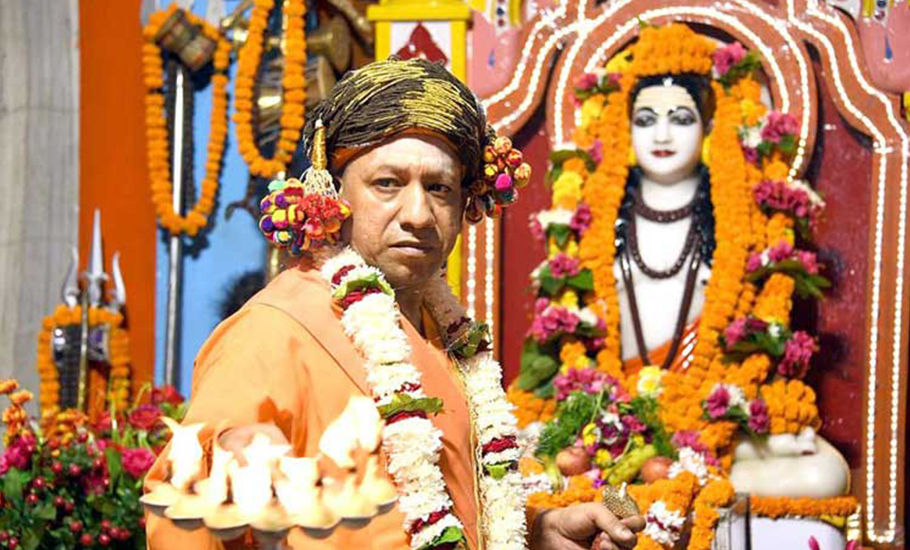
Why is BJP winning in UP despite anti-incumbency?
The party offered freebies, kept Hindu voters close, and never let the Ram Mandir in Ayodhya out of its agenda

The BJP is all set to win Uttar Pradesh as trends showed the party inching towards 260-plus seats, way ahead of the majority mark of 202 in the 403-member assembly.
The Samajwadi Party, the BJP’s chief contender in Uttar Pradesh, was leading in 134 seats at 3 pm.
Political experts, taking cue from the huge crowds at SP leader Akhilesh Yadav’s campaign rallies and factoring in the disappointment of voters over unemployment, price rise and the dismal COVID management in the state, most notably in the deadly second wave of the pandemic, had predicted the BJP to fare badly this time. Trends on counting day, however, show that the party has turned the public support in its favour, even if it may not achieve the feat of winning 325 seats in 2017.
Freebies and Hindutva
To begin with, the party to keep its Hindu voters close, had promised a slew of freebies, jobs for at least one member of each family and punishment for those guilty of ‘Love Jihad’ in its election manifesto.
During election rallies, key campaigners including Prime Minister Narendra Modi and UP Chief Minister Yogi Adityanath repeatedly harped on the BJP’s “double-engine” government’s committment towards the development of Uttar Pradesh, which in turn will help the Dalits, backward classes, women and youth. The 2013 Muzaffarnagar riots and allegations against the SP of providing political patronage to criminals and mafia during its rule were prominent in the BJP’s poll rhetoric this time.
With women making up 46.5 per cent of the state’s voters, the saffron party strategically kept aside a chunk of its freebies for women. It promised free motorbikes for college-going girls, ₹25,000 grant for marriage of poor girls, allocation of ₹5,000 crore for self-help groups and ₹1,500 monthly pension for destitute women and senior citizens, almost thrice of what is being offered now.
The poll promise of a 10-year jail sentence and ₹1 lakh fine for those guilty of ‘Love Jihad’ also seems to have sent a message about the party’s commitment towards “protecting Hindu women from Muslim youths” among Hindu voters.
Around 44 central schemes ensuring free ration, houses, toilets and cash doles for beneficiaries among others are also being implemented in Uttar Pradesh apart from state-sponsored schemes.
According to media reports citing oficial recores, when compared to earlier regimes, fewer crimes were reported during the rule of Adityanath, who again has no corruption charges against him. These factors are in addition to the BJP’s herculean task of initiating the construction of the Ram temple in Ayodhya – an initiative that has cemented the belief of millions of Hindu voters in the saffron party.
Global worries
One may ask, what happened to the anti-incumbency wave against the Yogi Adityanath government prior to the polls? Political analysts say that voters may have seen the COVID situation and inflation as global incidents and not endemic to UP alone, and thus did not reflect the ‘incompetence’ of the BJP government.
As far as SP is concerned, it may up its vote share in this Assembly poll by consolidating the Yadav and Muslim votes and eroding the BJP’s vote count among sections including in the farming communities like Jats, Kurmis and Mauryas. But the current trends are proof that the SP’s rising popularity may not necessary translate into BJP’s defeat.

